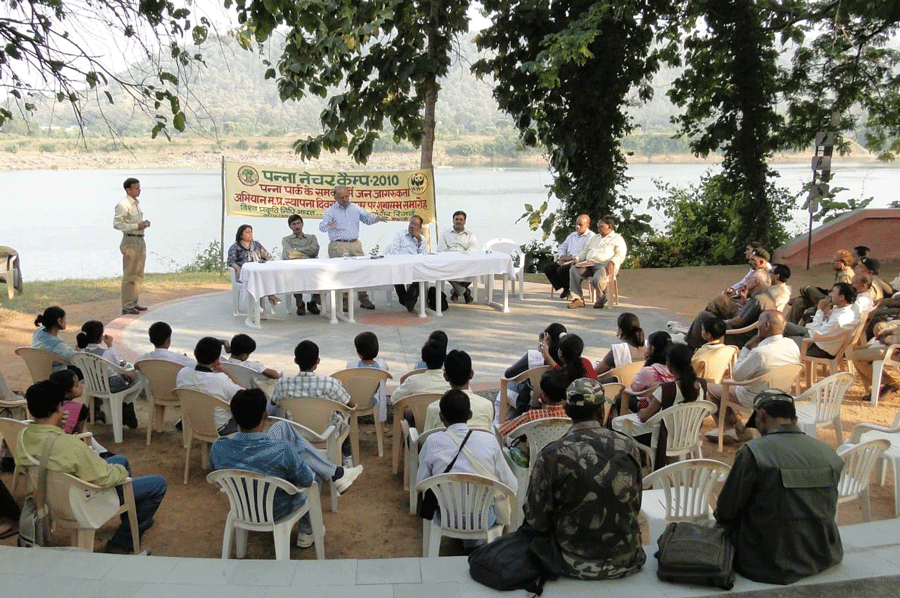ROLE OF ARTIFICIAL INTELLIGENCE (AI) IN FORESTRY
Anita Tomar and Sanjay Singh
Artificial intelligence (Al) could be an interesting solution for Forestry sector. Forestry sector under changing conditions needs new tools to find insight and forecast forest dynamics and management. Al encompasses a wide range of techniques and frameworks dating back to the middle of the 20th century, although its use in forestry is relatively new, especially when compared to the early adoption of Al in other fields such as agriculture. An Al system that is specified to perform a limited task, is commonly applied in forest biometry (e.g., analysis of forest structure with 3D point cloud data) but is not so much used in other forestry domains.
The application of Al in forestry sector is mainly focused on improving predictions. Due to the potential power of Al, opportunities are open to broadening the suite of applications, such as enhancing the understanding of forest processes. Thus, it is important to discuss, jointly with academia and operational sectors, the implications, limitations, and capabilities of this technology as an alternative quantitative method in forest management. With the growing world’s population and the demand for food rising, it is crucial to use efficient planting methods to increase production on the limited amount of land. Al is becoming more prevalent every day in forestry as well as agriculture sector and Al-based devices are elevating the current forestry system.
Forestry is dependent on a number of variables, including soil nutrient content, moisture, crop rotation, rainfall, temperature, etc. Products based on artificial intelligence can use these variables to track crop productivity. In order to improve a wide range of forestry-related tasks throughout the entire food supply chain, industries are turning to Artificial Intelligence technologies. Applications and solutions that use Al in Forestry have been created to assist farmers in precise and regulated crop farming by giving them the right advice on water management, crop rotation, timely harvesting, the type of crop to be cultivated, optimal planting, pest attacks, and nutrition management etc. Al-enabled systems make weather predictions, monitor agricultural sustainability, and assess farms for the presence of diseases or pests and undernourished plants using data like temperature, precipitation, wind speed, and sun radiation in conjunction with photographs taken by satellites and drones.
With equipment as basic as an SMS-enabled phone and the sowing App, farmers without connectivity may profit from Al right away. Farmers with Wi-Fi connectivity can utilise Al apps to get a constantly Al-tailored plan for their farms, in the meantime. Farmers can meet the increased demand for food while growing output and revenues responsibly and without diminishing priceless natural resources with the help of Al-driven technologies.
AI & ITS ROLE –
1. Al in Forest Conservation: Al algorithms can be used to build models that forecast the expansion of forests, the likelihood of fires, or the spread of illnesses. Al can play a tremendous role in the control of forest fire. Software can provide the information about the places which are most vulnerable to catch fire. Using machine learning, the AltaML fight prevention Al Model analyzes thousands of data points to forecast, based on region, how likely new fires will be the next day. Given that it’s trained through historical fire data, it can also make predictions through regional weather and forest conditions planning and decision-making for sustainable forest management can be aided by these models.
Al algorithms can detect and classify land cover, monitor deforestation, track changes in habitats, and identify invasive species, providing valuable insights for ecological research and conservation planning.
2. Weather forecasting using Al: Farmers find it challenging to decide the best time to sow seeds due to various environmental factors. With the aid of artificial intelligence, farmers can analyze weather conditions by using weather forecasting, which helps them plan the type of crop that can be grown and when seeds should be sown.
3. Crop and Soil health monitoring system: Types of soil and nourishment of the soil have a substantial impact on the crops that are grown and their value. The quality of the soil is declining as a result of growing deforestation and pollution. Crop health monitoring can also be done by using drones. Drone technology has had a lasting effect on the productivity of India’s forestry sector. The companies like equinox drones provide farmers with drone-powered solutions to boost productivity in a variety of farming operations, including precision farming, livestock management, pesticide application, crop stress identification, treatment planning, plant growth monitoring, and survey.
4. Al Robotics: Robots can play important role in Forestry Sector, they can easily carry out a variety of activities in farming fields based on Al. As compared to humans, these robots are trained to harvest crops more quickly and in greater quantities while controlling weeds. These robots are taught to harvest and pack crops while simultaneously inspecting the crops’ quality and looking for weeds. These robots can also overcome the difficulties experienced by forest based industries laborers. Forest department can use a forestry robot to plant seedlings, reducing the risk of manual errors and improving overall efficiency of plantation site.
5. Pests detection using Al: Al can play important role in plant Protection. One of the lethal enemies of tree plantation which cause drastic damage are insects and pests. Al systems employ satellite photos and historical data to determine whether any insects have landed and, if so, which species-such as locusts, grasshoppers, and others-have done so. Al aids farmers in their battle against pests by sending alerts to their cell phones so that forest department, farmers may take the necessary precautions and can take action to prevent crop damage, leading to a better overall crop yield.
6. Al to reduce deforestation: Al-powered algorithms can analyze satellite imagery and other data sources to detect illegal logging activities. These algorithms can identify patterns that are indicative of illegal logging, such as changes in forest cover, road construction, and vehicle movements.
Al in forestry offers numerous opportunities, including improved crop health monitoring, precision plantation, and weather forecasting. However, farmers face several challenges when adopting Al, including the cost of implementing Al systems and the need for technical expertise. Farmers can improve crop health, optimize operations, and drive profitability, paving the way for a brighter future in Forestry sector.













